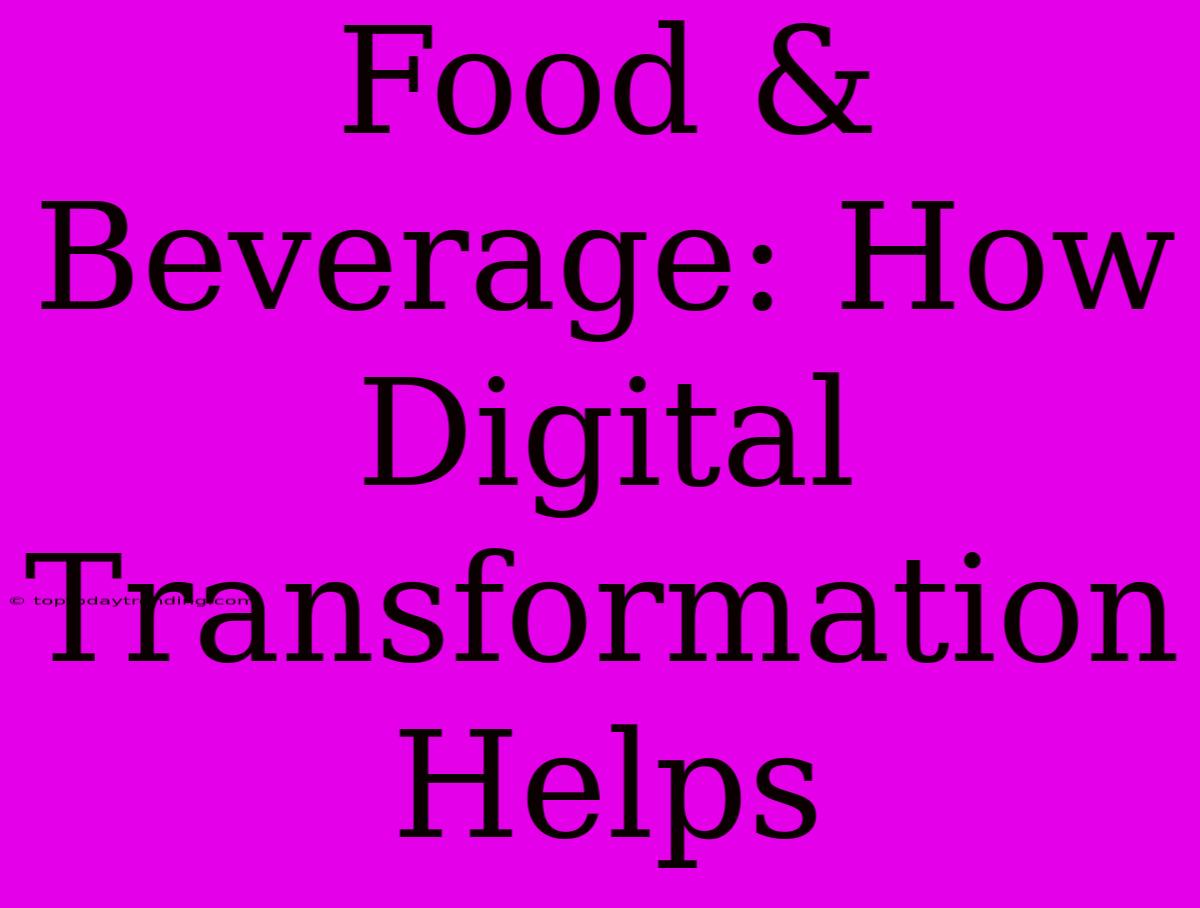Food & Beverage: How Digital Transformation Helps
The food and beverage (F&B) industry is undergoing a rapid digital transformation, fueled by changing consumer preferences, advancements in technology, and the growing demand for efficiency and sustainability. From farm to fork, digital solutions are revolutionizing every aspect of the F&B supply chain, creating opportunities for businesses to enhance customer experiences, improve operational efficiency, and achieve sustainable growth.
How Digital Transformation is Shaping the F&B Industry
Here are some key ways digital transformation is impacting the F&B sector:
1. Enhanced Customer Experience
a) Personalized Recommendations and Targeted Marketing:
- Data Analytics: Leveraging data analytics, F&B companies can understand customer preferences, dietary restrictions, and purchasing habits. This insights enable them to provide personalized recommendations and tailor marketing campaigns for individual customers.
- E-commerce Platforms: Online ordering and delivery services have become essential for F&B businesses. User-friendly platforms with features like order tracking and personalized offers enhance the customer experience.
b) Seamless Ordering and Delivery:
- Mobile Apps and Online Ordering: Consumers expect convenient ordering options. Mobile apps and online ordering systems streamline the process, allowing customers to order food and beverages from anywhere at any time.
- Delivery Optimization: Real-time tracking and optimized delivery routes ensure faster and more efficient delivery, enhancing customer satisfaction.
c) Interactive Engagement:
- Social Media Marketing: F&B companies actively engage with customers on social media platforms. They share recipes, behind-the-scenes content, and promotions to build brand loyalty and drive sales.
- Customer Feedback and Reviews: Online review platforms and in-app feedback mechanisms provide valuable customer insights. Businesses can respond to feedback and address customer concerns quickly.
2. Operational Efficiency and Cost Optimization
a) Supply Chain Management:
- Real-time Inventory Tracking: Digital solutions enable real-time tracking of inventory levels, reducing stockouts and waste.
- Predictive Analytics: Data-driven insights help businesses anticipate demand fluctuations and optimize production schedules, leading to cost savings.
b) Production and Manufacturing:
- Automation and Robotics: Automation technologies like robotic arms and smart sensors can increase production efficiency and reduce labor costs.
- Smart Factories: Digitalized production processes enhance quality control, optimize resource utilization, and minimize downtime.
c) Financial Management:
- Cloud-based Accounting Software: Cloud-based solutions streamline financial management tasks like accounting, payroll, and reporting.
- Real-time Financial Data: Digital tools provide real-time insights into financial performance, allowing businesses to make informed decisions and track profitability.
3. Sustainable Practices
a) Food Waste Reduction:
- Smart Inventory Management: Digital systems can help optimize inventory levels, minimize overstocking, and reduce food waste.
- Data-driven Insights: Analytics can identify patterns in food waste and help businesses implement targeted initiatives for waste reduction.
b) Environmental Monitoring and Optimization:
- IoT Sensors: Internet of Things (IoT) sensors can track energy consumption and environmental factors, optimizing energy efficiency and reducing environmental impact.
- Traceability and Transparency: Digital solutions enable transparency in the supply chain, allowing consumers to track the origin and journey of their food.
c) Sustainable Packaging:
- Digital Printing and Packaging Design: Digital printing technologies allow for personalized packaging and on-demand production, reducing waste and promoting sustainability.
- Sustainable Packaging Solutions: F&B companies are exploring eco-friendly packaging materials and innovative designs to minimize environmental impact.
The Future of Digital Transformation in F&B
The F&B industry is constantly evolving, and digital transformation will continue to play a pivotal role in shaping the future of the sector.
Here are some key trends to watch:
- Artificial Intelligence (AI): AI-powered solutions will be used to personalize customer experiences, automate tasks, and optimize operations.
- Virtual and Augmented Reality (VR/AR): VR/AR technologies will provide immersive experiences for customers, from virtual food tours to interactive product demos.
- Blockchain Technology: Blockchain can enhance supply chain transparency, traceability, and food safety.
- Cloud Computing: Cloud solutions will further enable businesses to access data, collaborate with partners, and scale their operations easily.
Digital transformation presents significant opportunities for F&B companies to thrive in a competitive market. By embracing digital solutions, businesses can enhance customer satisfaction, optimize operations, and contribute to a more sustainable future.

